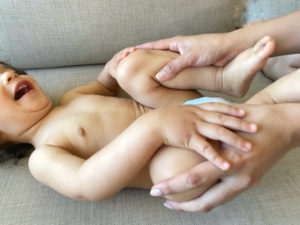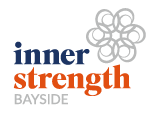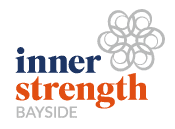Physiotherapy for hip dysplasia in babies: a way to empower parents to help their little humans.
Congenital hip dysplasia is the most common disorder in infants and babies. Due to the current research and high volume of cases it is now possible to diagnose right from very early days of life of an infant.
Even though it is so common and usually very well managed, it can be hard and overwhelming for new parents to deal with the dos and don’ts along with the other struggles of parenthood. With physiotherapy we can help the parents feel empowered and enable them to help their babies along the process of healing.

Any hip dysplasia baby goes through the following steps:
- The midwife or the hospital nurse checks for the clicks and smoothness of the hip bones.
- If they find something they are asked to monitor regularly at the visits with the maternal and child health nurse. These days they do it as a mandatory check till the 1st year of visit.
- After 6 weeks they ask for an ultrasound even if they are slightly concerned. Why 6 weeks? Because the hip bone and socket take time to form.
- A paediatrician decides on the next steps of management depending on the condition of the hip joint. The most common one is casting and bracing.
It is of absolute importance to treat this condition at its earliest to make the process of healing fast and effective.
It is not standard practice for a paediatrician to refer to a physiotherapist but a visit to a physiotherapist after the diagnosis can give you a better insight and can help you with managing the condition at home specifically during the splint free time at home.
Research has shown that appropriate massage, stretching and strengthening can help with the recovery of the hip while the child is in the brace. All these treatments can be performed by the parents at home once perfected by a visit to the physiotherapist every month.
It is natural for us to think that how can a baby exercise and strengthen the hip muscles. The answer is simple, by using their developmental milestones to our advantage. A physiotherapist will do a thorough evaluation of your baby, go through the scans, follow the recommendations by the paediatrician and make a plan that suits the baby according to their age.
For example, a baby with hip dysplasia needs to be kept in a certain position to give their hip a mechanical advantage. So if it is a baby who is 6 months old, the physiotherapist takes advantage of their current milestones and trains the hip muscles on a number of surfaces keeping the hip position in mind and challenge the hip muscles. This also avoids the chances of delayed milestones that can happen in babies with serial and prolonged periods of casting.
So, if your baby is diagnosed with hip dysplasia or if you know someone who is, you can feel more in control of the situation knowing that you can help the baby at home during their splint free duration.
Written by Urvi Shelar, Physiotherapist


